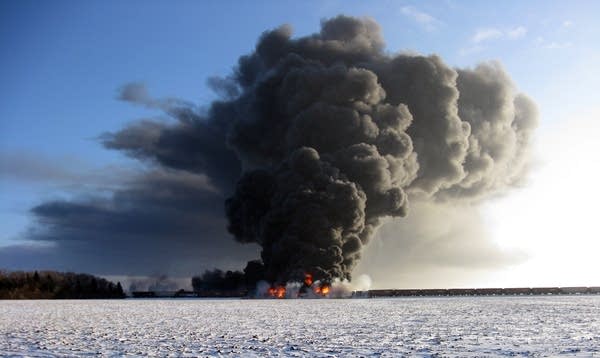Huge N.D. oil spill burns into second day; weather shift threatens Casselton

This photo provided by Cass County Commissioner Ken Pawluk shows the train derailment and fire west of Casselton, N.D., Monday, Dec. 30, 2013.
Ken Pawluk/AP
Go Deeper.
Create an account or log in to save stories.
Like this?
Thanks for liking this story! We have added it to a list of your favorite stories.


